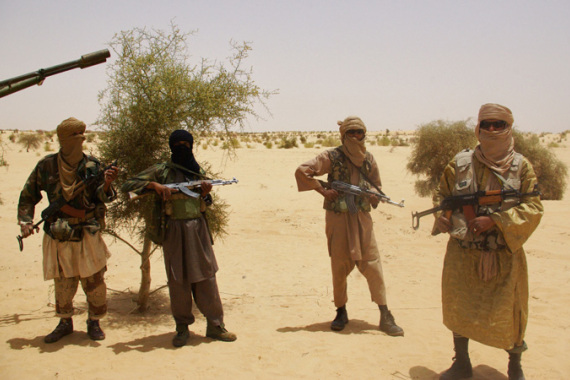In line with our advocacy mission aimed at creating an environment conducive for the practice of journalism, the Media Foundation for West Africa (MFWA) has for some time been paying particular attention to the Sahelian zone of West Africa which is in the grip of jihadist insurgents and the implication of this security crisis for the work of journalists.
In this vein, the MFWA has published articles highlighting the challenges facing journalists in Niger and Burkina Faso. This third section is focused on Mali.
Freedom of expression is a right enshrined in Article 19 of the Universal Declaration of Human Rights. It gives everyone the right to freely seek, receive and impart information and ideas by any means of expression. It allows the free exercise and protection of all other fundamental rights. Several experiences around the world indicate that when freedom of expression retrogresses, other rights soon suffer the same fate. This is the case in Mali.
Until 2010, two years before the occupation of the north of the country by extremist groups, the press freedom situation in Mali was rated “fairly good.” But with the security crisis that has bedeviled the country for nine years now, the situation has deteriorated considerably. There has been an increase in attacks on press freedom. The north and center of the country remain extremely dangerous areas for Malian journalists.
The safety of journalists in Mali has become a daily challenge. Journalists and the media are too often targeted by those who want to impose a draconian blockade on information for citizens and on public discourse.
This is confirmed by Ramata Diaouré, a key figure in the Malian press. Journalist and trainer, she is also a member of the expert committee of the Maison de la Presse. “During and after the crisis, we still cannot work as we would like” she confides, while conceding that there are “objectively, big obstacles”. She nevertheless deplores the lack of knowledge on the part of many actors about the legal texts governing the profession, which can lead to mistrust on both sides.
Adama Diarra, former journalist for the state-owned daily L’Essor, accompanied the first convoy of the Malian army which entered Gao during the liberation of northern Mali in 2013. Being part of this complicated and dangerous mission was essential for this specialist. It was a historic event in the country and she wanted to see with her own eyes the security and defense issues. But it was not an easy task and she got the authorization only after tough negotiations, she said.
Despite their fear of reprisals from terrorists or self-defense militias, most Malian journalists living in areas plagued by terrorism say they live with the threat, and do their job.
“If there are terrorist attacks or inter-communal conflicts in my locality, I have to go and make the report because colleagues from Bamako will call me for more details on the attack. I take my responsibilities with all the risks by venturing on the scene because it is my duty to inform. The traumatized populations want to understand why the massacres are growing in intensity. We get phone calls from our professional associations telling us to be careful with our lives by avoiding a thorough reporting on the deadly attacks. Most of our colleagues, who could no longer hold out, decided to give up the job or take refuge in the south (Bamako), “said a journalist from the Mopti region (central Mali).
This is not the case with Moussa Camara, a journalist for radio Mikado (MINUSMA) based in the MINUSMA military camp in Kidal, who benefits from the protection of UN peacekeepers during his reporting. The Director of Information and Public Relations of the Armed Forces, Colonel Diarran Koné, has cautioned the Malian media to avoid going to the wild zones because they can fall victim to ambush.
“That’s why with each attack, we issue a press release to the various editors for publication urging them to avoid sending journalists to the scene, as it is very risky. In these areas, we had military journalists on the front lines who give us real-time information in images and videos.
“We prohibit these areas to civilian journalists, it often happens that we escort certain journalists at the request of the hierarchy to do a major report. Malian journalists are aware that the measures we had taken, reluctantly, are for their protection,” the Colonel confides.
According to Hamma Yalcoye, Professor of the Sociology, Communication and Media at the University of Bamako, the journalist operating in areas exposed to terrorism should have:
- Humility: Overconfidence is dangerous. Each mission should be approached as if it were the first, with modesty and respect for others, for local customs.
- Preparation: It is imperative to anticipate the risks by knowing the culture of the country, of the region in order to blend in as well as possible with the local environment. Beyond the physical differences, behavioral differences can quickly betray in some countries. Example: smoking during Ramadan, reaching out to a woman to greet her etc.
- Common sense: One must know how to listen to his/her instincts, remain cautious, discreet and attentive to warning signals. Do not get carried away by adrenaline or the race for recognition; a report or a photo is not worth your life.
In a combat zone, the journalist should wear a bulletproof vest and helmet and identify himself as a journalist. The itinerary must be well prepared before any trip. At a checkpoint, stay calm and cooperate with the guards. In the face of shots, you have to get down to the ground and take cover.





